|
WOMEN’S DAY
(March is Women’s History Month)
CULTURAL RESOURCES
Sunday, March 3, 2013
Guest Cultural Resource Commentator: Florence Williams, Women Ministry President, educator, and community leader, Marin City (Sausalito), CA
I. Introduction
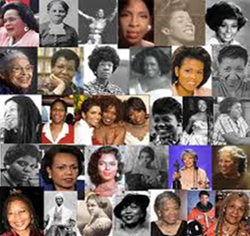 |
Women’s Day on African American church calendars provides churches with opportunities to expand their knowledge, address issues facing the African American female, and acknowledge contributions and sacrifices countless women have made to the Black Church, families, and communities. Additionally it is a time to encourage younger women—and men—to catch the torch and keep on running to meets the needs of our community. |
The biblical message of Queen Esther speaks some important truths to this generation of church women. In the book of Esther, Mordecai appeals to Esther to use her power and influence to save her people. What is the role of the black Christian woman in times like these? We too are to use our power and influence as torch bearers, just as did Esther.
Black Christian women have historically shown social and spiritual sensitivity relative to the issues they faced. These women do as Paul suggested—redeem the time. They are not idle, for idleness is a handmaid of Satan. Black women must continue to use their influence for the good of others, such as their family, the body of Christ, other young women, and the world. Mordecai reminded Esther that God had a plan for her life. God has a plan for us too. We can use the influence we have to uplift the world and glorify God.
|
II. History
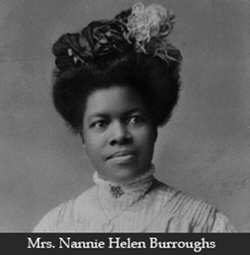 Women have traditionally been the dominant demographic within the black church since its ascendance in the years following Reconstruction. The majority presence of women can be explained through a number of factors, but of most import is the fact that the church has represented the primary sphere through which women of all economic means and educational backgrounds found a way to improve their communities and redefine notions of respectability and morality. Although most denominations and/or individual churches refused to acknowledge the “calling” of women to preach the gospel or their ability to serve in traditional leadership roles, women found alternative ways to deliver the “good news” and insure the financial stability of and expand the core mission of these churches.
Women have traditionally been the dominant demographic within the black church since its ascendance in the years following Reconstruction. The majority presence of women can be explained through a number of factors, but of most import is the fact that the church has represented the primary sphere through which women of all economic means and educational backgrounds found a way to improve their communities and redefine notions of respectability and morality. Although most denominations and/or individual churches refused to acknowledge the “calling” of women to preach the gospel or their ability to serve in traditional leadership roles, women found alternative ways to deliver the “good news” and insure the financial stability of and expand the core mission of these churches.
Noting the historic and monumental work of women within the Baptist denomination, in 1908 Nannie Helen Burroughs, then head of the Women’s Convention of the National Baptist Convention (NBC), introduced the concept of a National Women’s Day during the organization’s annual convention. The day would be the one instance in black church life where the contributions of women would be celebrated and commemorated by the black church. In her book Righteous Discontent, Evelyn Brooks Higginbotham says that the day was originally sanctioned to be celebrated on the last Sunday in July and was “conceived as an expression of sisterhood and a means of financial support for the Women Caucus.” Over the years, the celebration of Women’s Day spread to other denominations, religious societies, and white churches.
Today, women are usually assessed a special offering, but in years past individual auxiliaries and members engaged in various fundraising activities. The presentation of monies raised served as one of the highlights of the service. These offerings have insured the financial stability of many churches, supported missions to Africa and other countries, and provided financial support for pastors and delegates to denominational meetings and conventions. Many contemporary churches also have expanded the activities of Women’s Day beyond one Sunday service, with the addition of prayer breakfasts, spiritual retreats, workshops, and panels. For over a hundred years, Women’s Day has remained a central day in the celebratory life of the black church.
Women’s Day is important because it continues to give women an opportunity to plan worship and proclaim the Good News as teachers and preachers, as well as address the struggles and concerns evident in the lives of women in our church communities and in the world. In light of our ongoing efforts to encourage women and girls in the church and the world, we celebrate Women’s Day and praise God for women like Nannie Helen Burroughs who made a great sacrifice and took a risk at a time when women were just beginning to see a small light in the tunnel in many churches of our society.
God’s women make a vital contribution to the kingdom of Christ on earth. Whether they are continuing steadfastly in prayer, doing good works and deeds (Acts 9:36), showing hospitality, teaching the word in harmony with divine authority, being good wives, rearing godly children, or accomplishing various other commendable tasks, let us “rise up and call them blessed.”
Jesus chose a woman to be the person to whom he first appeared. This woman would be a prototype of the believer spreading the good news of salvation to the world. Mary Magdalene went and told the mourning and weeping male disciples that Jesus was raised indeed! The male disciples were too filled with fear and unbelief; they were not ready to announce Jesus’ resurrection. They didn’t believe Mary Magdalene when she made her announcement. But she knew she had seen the Lord.
|
III. Historic Pentecostal Women in Ministry
According to Vinson Synan,
The Azusa Street revival also brought women’s ministries to the forefront. One of the most influential ladies at Azusa Street was Jennie Evans Moore, who married William Seymour in 1908. She served faithfully at his side during the great revival days and often filled the pulpit while her husband was away. After her husband’s death in 1922, she pastored the church until 1931. She died in 1936. Other African-American women who played leading roles were Lucy Farrow and Julia Hutchins. Farrow, Seymour’s prayer warrior, prayed hundreds of seekers through to the tongues experience. She later led a missionary band to Liberia where she planted Pentecostal churches. Julia Hutchins, who had locked Seymour out of her church, soon became a Pentecostal and helped run the Mission.
Jennie Moore, Lucy Farrow, Julia Hutchins, Clara Lum, and Florence Crawford became the first of many women Pentecostal ministers who spread the message around the world. Women preachers had flourished in Holiness circles for decades before 1900, Maria Woodworth-Etter being the best known. After Azusa Street, Ida Robinson, Aimee Semple McPherson, and Kathryn Kuhlman carried forward the tradition. Indeed, Crawford, McPherson, and Robinson founded entire denominations.
One reason women flourished in the Pentecostal movement was the anointed use of the gifts of the Spirit. Using the prophet Joel as a guide, Pentecostal women included themselves in the “sons and daughters” who would prophesy and the “servants and handmaidens” on whom the Spirit would be poured out at the end of the age (Joel 2:28; Acts 2:17). Looking back, Azusa Street was a significant breakthrough for the cause of women in ministry.1
IV. Personal Reflection/Testimonies
Women’s Day in my congregation involves women taking charge of the entire Sunday morning service once a month on the fourth Sunday. The women’s ministry leads the devotional service and serve as officiants for this service, which celebrates the gifts and works of the women’s ministry. It is also a day when we dress up in hats of different colors and honor women who have made strides as faithful stewards of the church. We crown a woman as “Woman of the Month” each month as a means of encouragement; it is called the “We Encourage You Award.” A special love offering is also given to the chosen awardees.
Our women ministry has taken the celebration beyond a Sunday service program, with the addition of prayer day on the fourth Saturday of each month. We alternate between our regular prayer days and city-wide prayer gatherings and spiritual retreats. I have served as the president of the women’s ministry for approximately ten years and the two things that have kept me going and encouraged me are prayer and gospel music, which has helped to give me new strength to hold on, so that my faith and hope are renewed. Also, I am a gospel singer and have written several songs.
V. Prayer as a Resource for Women
I am a member of a prayer club that has existed for 25 years. We come together once a month to pray, study the Bible, encourage one another, and celebrate the birthdays of members. My son was a little kid when we started; he is now a young adult. We have seen members come and go, and many prayers answered.
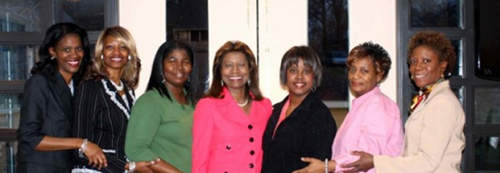
Prayer Warriors, West End Church of Christ, Atlanta, GA
I am also aware of other women prayer groups. The “Prayer Warriors” of the West End Church of Christ in Atlanta provide a support group for Christian women through effective, purposeful, prayer. Their purpose is: Pleasing God through the avenue of prayer.2
The Prayer Warriors are a group of faithful sisters of the body of Christ who are dedicated to praying and fasting on behalf of others. The Apostle Paul was very specific in his praying. We find examples of how Paul prayed for believers in Ephesians, Philippians, and Colossians. In Philippians and 1 and 2 Corinthians, we find examples of how believers prayed for one another. As we pray in faith, believing God, God will answer our prayer. The Bible tells us to come boldly to the throne of grace and obtain mercy and find grace to help in the time of need (Hebrews 4:16).
Reverend Carl Anderson of Oakland, California, used to start his radio program with the song: “It’s time to go to the altar, it’s time to go to the altar and pray—pray for the ones who have fallen by the way.” If women rise in unity and begin to pray in accordance with the Word of God, this will bring about a change.
Pastor Dana of Grace Chapel in Lexington, Massachusetts, hammers out this very important element of our “calling” as people of God. “In these times and all times prayer is the most powerful and radical thing that we can do!”3
VI. Poetry for This Lectionary Moment
Throughout this unit, the goal is to show that women historically have been and currently are called as special vessels to work in the kingdom of God, and through many trials and tribulations we have persevered. The following three poems are given to expound this point.
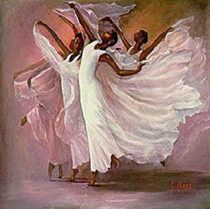
Angel Wings By Lauren Ross
by SLB
Life is a song written and produced by God,
But arranged by you.
It may be long and melancholy, or brief and joyful.
Sing of love,
Pain or anger,
bitterness or regret.
Sing a beautiful and special song of strength and hope
That moves others who witness it.
Or hum it softly to yourself.
Life, like a song, has high notes and low notes
And wrong notes.
No song is perfect, but with dedication and practice,
You’ll learn from any mistakes.
Keep practicing,
And never give up.
This life is your song.
How your song is heard is of your discretion.
But remember, you only get one song,
Make it memorable, because when you are gone,
Your song will still live on
And
Forever linger in someone’s heart.4
Strong Woman vs. a Woman of Strength
by Lavida Harris
A strong woman works out every day to keep her body in shape . . . but
A woman of strength kneels in prayer to keep her soul in shape.
A strong woman isn’t afraid of anything . . . but
A woman of strength shows courage in the midst of her fear.
A strong woman won’t let anyone get the best of her . . . but
A woman of strength gives the best of herself to everyone.
A strong woman makes mistakes and avoids the same in the future . . . but
A woman of strength realizes life’s mistakes can also be God’s blessings, and capitalizes on them.
A strong woman walks sure-footedly . . . but
A woman of strength knows God will catch her when she falls.
A strong woman wears the look of confidence on her face . . . but
A woman of strength wears grace.
A strong woman has faith that she is strong enough for the journey . . . but
A woman of strength has faith that it is in the journey that she will become strong.5
A Good Black Woman
Author Unknown
A good Black Woman is proud of herself.
She respects herself and others.
She is aware of who she is.
She neither seeks definition from the person she is with, nor does she expect them to read her mind.
She is quite capable of articulating her needs.
A good black woman is hopeful.
She is strong enough to make all her dreams come true.
She knows love, therefore she gives love.
She recognizes that her love has great value and must be reciprocated.
If her love is taken for granted, it soon disappears.
A good black woman has a dash of inspiration, a dabble of endurance.
She knows that she will, at times, have to inspire others to reach the potential God
gave them.
A good black woman knows her past, understands her present and moves toward the future.
A good black woman knows God.
She knows that with God the world is her playground, but without God she will just be played.
A good black woman does not live in fear of the future because of her past.
Instead, she understands that her life experiences are merely lessons,
meant to bring her closer to self-knowledge and unconditional self-love.6
VII. Ideas to Enhance Women’s Day Celebrations
1. Be intentional in involving women. Jenni Catron, in her article “The Church’s Next Great Crisis,” writes:
Are we as church leaders creating a culture where women feel like their gifts, even those gifts that might stereotypically be thought of, are not welcomed and valued? My guess is that we want to. We never intended to alienate half of the population, but my fear is that our lack of intentionality is leading to a crisis that could be devastating to those we are called to reach.
While our job as the church is not necessarily to follow culture, I do believe we’re responsible for being aware of culture and how it impacts reaching and disciplining people. Gone are the days where every young woman pines away solely for marriage and children. Yes, they will want those things but they also want an education, a successful career, and a chance to develop their unique identity. Statistics tell us that the average age women get married now is 30 years old. This statistic has changed drastically from even as little as a decade ago. In addition, there are more single women than married women in the U.S. today, and we know that they are more educated than ever before. In light of these statistics, what are you doing differently to connect with today’s young woman? What are these women subconsciously hearing from your church?
Be intentional. Create a plan to more actively involve women in ministry.
Young women operate under the assumption that hospitality roles and kids ministry are the only options for them to serve. These are the traditional roles they have seen women serve in all their lives, so they assume that those are still the only acceptable roles.”7
2. Bring women together. Nannie Helen Burroughs conceived Women’s Day as a way to raise funds to support the women’s auxiliary of the National Baptist Convention and women causes. Why not at least use your Women’s Day celebration to organize women throughout the community and the region to come together to pray and discuss issues of importance to our families and communities?
3. Make all women visible on Women’s Day and beyond. Include as part of your celebration women whom society makes invisible: women who have been incarcerated, disabled women, women with HIV/AIDS, and other groups of women as applicable to your church and community.
4. Get the youth involved! View the sample event information below:
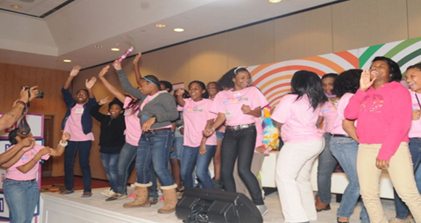 NATIONAL THEME for 2013
NATIONAL THEME for 2013
Women Inspiring Innovation through Imagination: Celebrating Women in Science, Technology, Engineering, and Mathematics
The national theme can be used creatively with the YOUTH of your congregation. Find women within your congregation who have careers in the listed fields of the theme. Have your youth interview these phenomenal women and broadcast the interview in a 20/20 format during a special event or throughout a series of worship services.
The Steve and Marjorie Harvey Foundation’s 3 rd Annual “Girls Who Rule the World” Mentoring Weekend was sponsored by Choice Hotels, U.S. Marines, Ford Motor Company, U.S. Fish and Wildlife Service, Evergreen Marriott, Coca-Cola, K&G Fashion Superstore, Legendary Events, Stone Mountain Park, Timeless Brands, Frito-Lay, and Mary Tipton Corporation.
Since 2010, Marjorie Harvey has spearheaded an energy-filled weekend to spark change and address self-confidence, education, health and wellness, common pressures and more that young women face today. Bringing together a team of inspiring and powerful women, previous weekends have included CNN’s Soledad O’Brien and Fredricka Whitfield, The View’s Sherri Shepherd, five-time Olympian Teresa Edwards, and more. Empowering mind, body and spirit with guidance addressing the social, emotional, educational and cultural experiences they face today, the young women who took part in this weekend sustain a role with the Steve and Marjorie Harvey Foundation that include mentor pairing and other educational experiences, to ensure continued enhancement and positive growth in helping young women to achieve their maximum potential and build successful futures.
For more information about the Steve and Marjorie Harvey Foundation programs, please visit www.smharveyfoundation.org and view a video from the mentoring weekend here.
5. Share a day with disabled women. Many women, old and young, are disabled and cannot participate in the life of a church without great difficulty. Why not take the Church to them. Visit a hospital for disabled military women, a rehab center for women recovering from strokes, or any of the other numerous entities that serve disabled women.
6. Help women stand up straight. There are numerous women in every community who through a variety of circumstances are crippled but want to be healed. Determine ways that your church can help women immediately stand up straight. Perhaps something as simple as a visit to a nursing home by a hair stylist and make-up artist from your church (or hired by your church) will make a world of difference to some woman. Ideas that will likely have a more lasting impact would be for a group of women from your church to volunteer for Habitat for Humanity to help build a house for a woman, or for a group of women from your church to find jobs for five women.
7. Create an illustrated timeline of women’s leadership in your congregation. Post a long sheet of paper (6’ to 10’ in length) in your fellowship hall. Begin with the date your congregation was formed (or an earlier date if ministry occurred before then) and note major decades along the top of the sheet. Invite members to add in dates and activities of women in your congregation. You’ll have fun recalling these events, and the younger people in your congregation might be surprised at when some of these ‘firsts’ took place.
8. Discover stories about the women in your congregation who have contributed greatly to ministry in your community but who have done so with little fanfare or recognition. Interview older women. Document their lives. This makes a great oral history project. Consider sharing these stories in a written format. This would be a real gift to your congregation.
9. Hold a family night in your congregation. Start with a potluck supper or a catered meal. Then invite families to answer questions together. Use these or come up with your own: What’s the most courageous thing someone in your family has done? Whom do you admire for his or her boldness? What does acting boldly on your faith in Jesus Christ mean to you?
10. Hold a potluck to honor women. Honor women from your community who have acted courageously for the community’s sake. Hold a special potluck or tea in their honor.
11. Celebrate yourself. Consider the following ways:
- Reflect on the question, Who have been the bold women in my life? Use “Journaling: Create Your Own Sacred Writings” as a guide in putting your reflections in written form.”8
- Honor a courageous woman who has inspired you. If she’s still living, let her know what a difference she made in your life, or invite her out to lunch and tell her why you think she’s bold.
- Capture your own life story. Reflect on the question, How have I acted boldly using my faith in Jesus Christ? Record this in some way—in a journal, in a blog, in a letter to your children, or on a video.
12. Plan a city-wide, or even regional-wide prayer day where women from all over the region in your area come together to pray, unite, and work together in unity. Set up publicity committees and contact persons in each city to help promote it. There are not many things that can unite Christians the way prayer does. Consider the following example:
More than 80 African-American women gathered in a celebration of sisterhood and unity at the first-ever African-American Women of Santa Barbara County “Coming Together and Being Together” luncheon held Feb. 11 at the UCSB Mosher Alumni House. For the attendees, made up of entrepreneurs, doctors, lawyers, entertainers, scholars and mothers, the momentous event was fittingly held in February during Black History Month.
The theme “Black Women in American Culture and History” spoke volumes in a room full of dynamic women who have excelled in various avenues of life. These courageous individuals continue to persevere despite social and economic diversities, striving to realize unlimited possibilities for the future.
The event began with words of welcome and gratitude from event co-chair Wendy Sims-Moten. “Thank you so much for coming today,” she said. “I have tried to hold back the tears because this meeting started as a conversation that I’ve had with many of you in this room today—a conversation that I’m sure you’ve had with yourselves about bringing women of color together. So today is about taking the time to just acknowledge each other, honor and appreciate each other, and leave knowing that somebody has your back.”
Sojourner Kincaid-Rolle, esteemed poet, playwright and community activist, began the naming ceremony with a lighted long-stemmed candle in her right hand and asked each person seated at a table to stand up and introduce themselves. As the salutations continued, Rolle made her way from table to table throughout the room, igniting a single candle at each table as a symbol of solidarity.
Women of all ages, dressed in their Sunday best for the joyous and inspiring ceremony, rose to their feet and expressed strong feelings of sentiment to their peers. Betty Chase said she “loved being a part of this rainbow of color.” JoAnne Meade Young, who was also celebrating her 66th birthday on this special day, stood and proclaimed to the room, “I’m normally a quiet person, but I love you all as my sisters.”
Then, a UCSB student erupted the room in laughter in sharing her words of discovery: “Good morning, everyone. This is my fourth year here in Santa Barbara, and I’ve heard you all existed!” Francis Moore continued the positive vibe with, “I just want to shout! My heart is filled with joy.”9
VIII. Songs That Speak to the Moment
The following songs can be easily used in morning worship programs on Women’s Day. These are songs of encouragement.
Lord Help Me to Hold Out
by James Cleveland
Chorus:
Lord, help me to hold out (3X)
Until my change come
Verse 1:
My way may not be easy
You did not say that it would be
But when it gets dark
I can’t see my way
You told me to put my trust in Thee
That’s why I’m asking you
Lord to help me to hold out.10
Let the Church Say Amen
by Andraé Crouch
Solo:
Let the Church say “Amen.” Let the Church say “Amen.”
God has spoken. So, let the church say “Amen.” Let the church, let ‘em say’ “Amen.”
If you believe the Word,
Let the whole church say “Amen,”
God has spoken. So, let the church say “Amen.” Lift your hands, Lift your hands,
God has spoken. So, let the church say “Amen.”
Thank you, Lord, God has spoken, So, let the church say “Amen.”
Choir (unison)
Let the Church say Amen. Let the church say Amen.
God has spoken. Let the church say Amen.
Choir (Harmony)
Let the Church say Amen. Let the church say Amen.
God has spoken. Let the church say Amen.
Leader:
Make this your response (Amen)…To whatever He says (Amen)…From the healing of your body (Amen) to the raising of the dead. (Amen) No matter how you feel (Amen) or how your world is reeling. (Amen) Battle on through the night… (Amen) cause you’re gonna win the fight. (Amen) Even in the valley (Harmony- Amen) or standing at your red see (Amen) continue to say (Amen) cause your help is on the way (Amen) Why?
Choir: (Unison) God has spoken.
Let the church (Harmony) say Amen.
Choir: (Harmony) Let the Church say Amen. Let the church say Amen. God has spoken, Let the church (Alto - Ooooo, Amen) say Amen.
Leader:
I need you to say (Amen) when your dreams about to die (Amen) knowing that God is not a man (Amen) he just can’t lie (Amen) in spite of what (Amen) what the devil does (Amen) know you’ve got a word (Amen) that has come from above. (Amen) Faith must be (Harmony – Amen) must be in what you say (Amen) so open your mouth (Amen) and say Amen to day (Amen) cause God
Choir: (Harmony)
God has spoken, let the church say Amen.
Leader:
You and you and you say (Amen) From the deacon (Amen) to the mothers (Amen) All of the sisters (Amen) All of the brothers say… O my my
Choir: (Harmony)
God has spoken. Let the church say Amen.
Special:
If God said it! (He can change you!)
Say it (rearrange you!)
I believe it (God said it!)
That settles it (believe it!)
God has spoken, Let the church say Amen.
End:
God has spoken
Let the church say Amen11 (as directed)
Ain’t Gonna Let Nobody Turn Me ‘Roun’
Traditional
Ain’t gonna let nobody turn me ‘roun’, turn me ‘roun’
Ain’t gonna let nobody turn me ‘roun’, I’ gonna wait until my change comes
Don’t let nobody turn you ‘roun’, turn you ‘roun’
Don’t let nobody turn you ‘roun’, wait until your change comes.
I say I’m gonna hold out, hold out, hold out
I say that I’m gonna hold out, until my change comes.
I promised the Lord that I would hold out, hold out
I promised the Lord that I would hold out, wait until my change comes.12
IX. Books to Enhance This Learning Moment
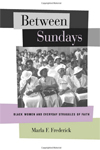 |
Fredricks, Maria F. Between Sundays: Black Women and Everyday Struggles of Faith. (Google eBook) University of California Press, 2003. |
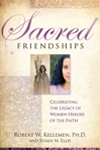 |
Keckley, Elizabeth. “Voices of Healing: African American Women of Faith; Part I: A Voice of Hope.” In Kellemen, Robert W., and Susan M. Ellis. Sacred Friendships: Celebrating the Legacy of Women Heroes of the Faith. BMH Books, 2009. |
X. Conclusion
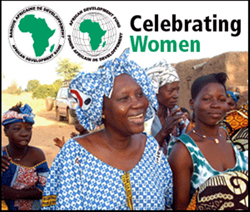 |
Women, Awake! History is filled with powerful and empowering examples of African American women sustaining, healing, reconciling, and guiding. This is an exciting time for women in all countries. Governments are recognizing that they cannot continue to develop and prosper without fully engaging one half of their population. Achieving gender equality and women’s rights around the world is on a par with other pressing global issues, including ending poverty and hunger, reducing infant and maternal mortality, and tackling the problems of climate change. |
All of these issues also create challenges. As the impact of the worst economic crisis in the last 40 years continues to be felt, one of the most urgent challenges is to address the chronic poverty and insecurity faced by the majority of the world’s women. Fundamental to our ability to meet these challenges is a well-educated female citizenry around the globe. Women know the time for change has come. “God is calling women that are militant in the Spirit—ready to wage war through powerful intercession, until they create an opening for the will of God for them to be birthed.”13 Against all odds, women will continue to soar.
Notes
|
1. Synan, Vinson. The Lasting Legacies of the Azusa Street Revival, http://enrichmentjournal.ag.org/200602/200602_142_Legacies.cfm (accessed 9 September 2012).
2. Prayer Warriors, West End Church of Christ, 1303 Ralph D. Abernathy Blvd., Atlanta, GA
30310; 404-753-6271; Secretary: gjohnson@thewestender.com.
3. Pastor Dana, Multicultural Ministries & Church Partnership, Grace Chapel, Lexington, MA; e-mail: information@cmsboston.org, or visit: www.bmaboston.org.
4. Online location: http://www.tributetoblackwomen.com/poems/lifesong.htm (accessed 5 January 2013).
5. Online location: http://www.tributetoblackwomen.com/poems/strongwoman.htm (accessed 5 January 2013).
6. Online location: http://www.tributetoblackwomen.com/poems/good_woman.htm (accessed 5 January 2013).
7. Catron, Jenni. “The Church’s Next Great Crisis.” Online location:
http://www.jennicatron.tv/the-churchs-next-great-crisis-2/ (accessed 3 December 2012).
8. “Journaling: Create Your Own Sacred Writings.” Online location:
www.elca.org/.../Journaling.pdf (accessed 23 September 2012).
9. Melissa Walker, Society columnist, NOOZHAWK (Noozhawk iSociety), mwalker@noozhawk.com (accessed 8 September 2012). For more information about the African-American Women of Santa Barbara County, contact Wendy Sims Moten at 805-453-3452 or oyaO2@msn.com.
10. Online location: http://www.allgospellyrics.com/?sec=listing&lyricid=4863 (accessed 9 October 2012).
11. Online location:
http://wwwlyricsondemand.com/a/andraecrouchlyrics/letthechurchsayamenlyrics.html (accessed 9 October 2012).
12. Online location:
http://.lyricsondemand.com/soundtracks/s/soundtrackforarevolutionlyrics/aintgonnaletnobodyturnmearoundlyrics.html (accessed 9 October 2012).
13. Kellemen, Robert, Dr., and Karole A. Edwards, Beyond the Suffering: Embracing the Legacy of African American Soul Care and Spiritual Direction. Grand Rapids, MI: Baker Books, 2007. |
|